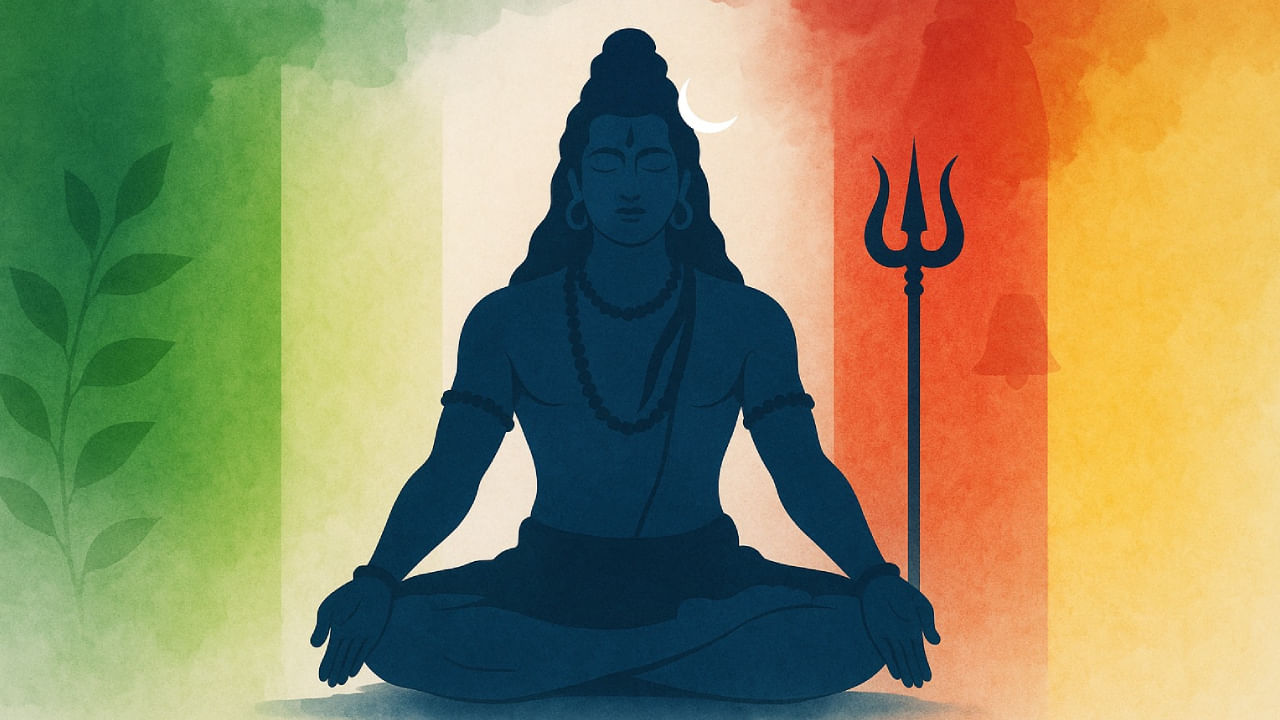Mumbai: The sacred month of Sawan holds immense importance in the worship of Lord Shiva. Devotees across the world observe fasts, offer water (jalabhishek), and perform rituals in hopes of gaining His blessings. But beyond the prayers and the fasting, colours also play a vital symbolic role during this holy period. Many devotees wonder — what are Lord Shiva’s favourite colours, and is there a deeper spiritual meaning behind them?
According to ancient beliefs, specific colours not only please Lord Shiva but also represent certain energies and philosophical truths. Each shade resonates with different aspects of Shiva’s divine form — from the ascetic meditator to the protector of nature and the fierce destroyer of evil. Here’s a closer look at which colours hold special reverence and how they connect with Shiva’s mythology and cosmic symbolism.
Green – The Colour of Nature and Fertility
Green symbolises nature, growth, and fertility — all core elements of the monsoon month of Sawan, when the earth blooms with life. This colour reflects Lord Shiva’s role as the nurturer and sustainer of the universe.
- Connection to Poison & Healing: According to the legend of Samudra Manthan (churning of the ocean), Lord Shiva consumed poison to save the world, turning His throat blue. Some stories mention that green medicinal herbs were used to soothe the effects of the poison — making green a healing and divine colour in this context.
White – Purity, Peace and Eternity
In Sanatan Dharma, white is strongly associated with Lord Shiva. It represents purity, renunciation, and the simplicity of a life beyond worldly illusions.
- Spiritual Symbolism: White contains all colours yet is attached to none — a perfect metaphor for Shiva’s formless, infinite, and detached existence.
- Ash and Austerity: Shiva is often depicted smeared in sacred ash (bhasma), which appears white and symbolises both the impermanence of life and the power of renunciation.
- Monday Significance: As Monday is dedicated to Lord Shiva, wearing green or white bangles or clothes on this day is considered auspicious — especially for married women seeking His blessings.
Red – Energy, Courage, and Divine Union
Red is the colour of life force, power, and vibrancy. It represents Lord Shiva’s fierce aspect — the destroyer of evil and protector of dharma.
- Marital Significance: In Sawan, married women often wear red to honour their marital bliss and pray for their husband’s longevity. Red is also symbolic of Shakti (Divine Feminine), and Shiva is worshipped as Ardhanarishwara — a union of Shiva and Parvati.
Yellow – Wisdom and Prosperity
Yellow is associated with intellect, auspiciousness, and positivity. As Adiguru — the first teacher — Lord Shiva is the giver of divine knowledge.
- Connection to Parvati: Yellow also links to Goddess Parvati, making it an important colour during rituals that honour the divine couple together.
Why Colours Matter in Sawan
Wearing or using specific colours during Sawan is not merely about aesthetics — each colour is an offering of emotion, intention, and devotion. These colours hold energetic and symbolic power, believed to draw Lord Shiva’s blessings in various aspects of life — healing, protection, fertility, wisdom, and inner peace.
So this Sawan, choose your colours with faith and mindfulness — and allow them to become a bridge between your devotion and the divine grace of Lord Shiva.
(Disclaimer: The information provided is based on traditional beliefs and religious texts. News9 Live does not endorse or validate these claims.)
